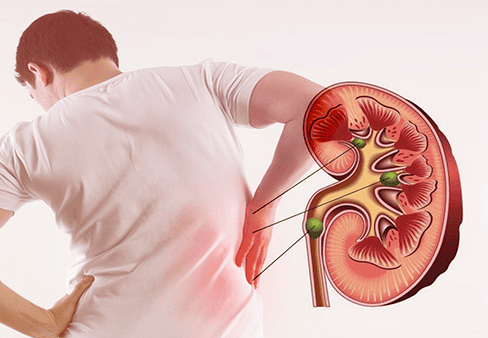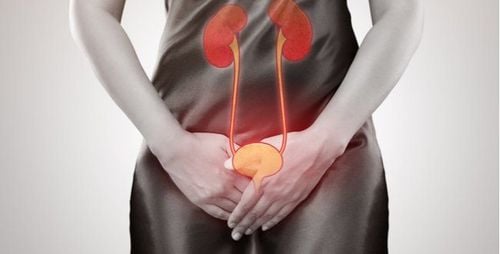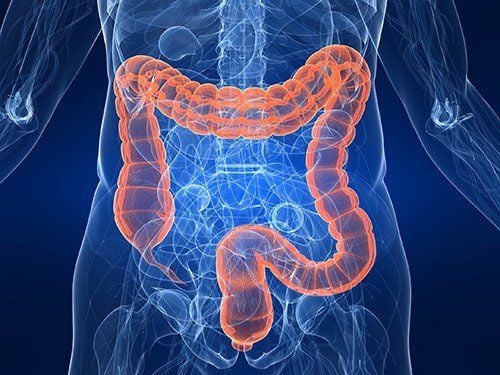This is an automatically translated article.
The article is professionally consulted by Dr. Nguyen Dinh Hung - Diagnostic Imaging - Department of Diagnostic Imaging - Vinmec Hai Phong International General Hospital.To accurately survey and diagnose diseases related to the urinary system such as urinary tract infections, urolithiasis, renal vascular disease, doctors often prescribe computed tomography of the urinary system. urine. This is a new imaging technique to help evaluate the structure and function of the two kidneys, visualize the urinary tract and examine the renal vessels.
1. Overview of urinary tract computed tomography
Computed tomography of the urinary system, also known as a CT scan of the urinary system, is an imaging method that allows to evaluate and examine the structure of all organs of the urinary system, including the kidney parenchyma. , calyx and renal pelvis, bilateral ureters, bladder and urethra. This method uses high-intensity X-rays to shine into the exposed area from the dome of the diaphragm to the end of the pubic joint.
In addition to the urinary system, other abdominal organs and lymph nodes can also be seen on the final radiograph. Computed tomography of the urinary tract can be performed with intravenous contrast to examine the renal vessels, assess the extent of renal parenchymal enhancement, and be more helpful in the visualization of the urinary tract. urine.
Computed tomography of the urinary system is more and more widely indicated in the diagnosis and treatment of many different diseases thanks to its important role and significance. Some outstanding advantages can be mentioned as:
● This method is minimally invasive, causing no pain or injury to the patient. The bilateral urinary tract reconstruction and bilateral renal geometry were successfully completed without surgery or intervention;
● Distinguish different tissues appearing in the urinary system such as inflammatory fluid, blood, necrotic tissue, calcification... thanks to specific density measurement during imaging;
● Full investigation of the structures of the urinary system extending from the kidney to the prostate gland. This is a superior advantage over the urinary X-ray method with the same principle of using X-rays;

Visualization of the urinary tract and adjacent structures; ● Computed tomography of the urinary system with contrast injection will help to delineate more clearly between structures, especially useful in examining the renal vessels.
2. Indications for computed tomography of the urinary system
The technique of computed tomography of the urinary system today is widely used in many different diseases thanks to its superior advantages over X-ray of the urinary system and ultrasound of the urinary system. Cases that need to be performed computed tomography of the urinary system include:
● The patient has clinical manifestations of renal colic;
Pathology of urinary system stones such as kidney stones , ureteral stones , bladder stones ;
● Diagnosis and assessment of severity of urinary tract injury;
● Congenital malformations of the urinary system such as horseshoe kidney, double kidney, urinary tract malformation;
● Diseases related to the prostate gland;
● Manifestations of prolonged urinary tract obstruction of unknown cause;
● Pathology of pelvic organs causing pressure on the urinary system;
● Inflammation in renal parenchyma and perirenal areas such as pyelonephritis, perirenal cavity infection, cystitis;
● Evaluate the size and invasiveness of tumors in the urinary system such as bladder tumor, kidney tumor, ureteral tumor, prostate cancer.
● Post-treatment assessment and follow-up during treatment.

The method of computed tomography of the urinary system is evaluated as a safe and effective technique in diagnosing diseases related to the urinary system, so it does not really have absolute contraindications. However, it is recommended that some cases should not be indicated with computed tomography of the urinary system including:
● Women who are suspected of being pregnant or are pregnant in the first trimester of pregnancy. High intensity X-rays used in computed tomography have the potential to cause birth defects in the first trimester of pregnancy according to many studies;
● Patients with chronic kidney diseases, kidney failure;
● People with a history of drug allergies, especially contrast dye allergies.
3. Procedure for performing computed tomography of the urinary system
Computed tomography of the urinary system should be performed according to the correct steps to ensure image quality and patient safety. The procedure for performing computed tomography of the urinary system includes the following steps:
● Prepare instruments including multi-slice computed tomography machine, syringe, cotton swab, physiological saline, contrast agents, anti-shock drugs;
● Prepare the patient: before performing a CT scan of the urinary system, the patient should be explained and advised about the steps in the imaging procedure as well as some possible complications. Instruct the patient to lie on the bed in a supine position, with both hands raised above the head. It should be noted with the patient that movement during the scan may interfere with the resulting image. Respiratory movements should be performed according to the instructions of the technician in the operating room;

Carrying out imaging: bringing the urinary tract survey area into the imaging chamber. The patient can be injected with contrast dye or not, depending on the doctor's prescription. Computed tomography of the urinary system is performed sequentially by cross-sectional sections of the entire urinary system and processed through a pre-installed static machine system. In contrast-enhanced computed tomography, the non-injection film is performed first compared with the contrast-enhanced radiograph. When reading the film, it is necessary to evaluate in general and detect abnormalities if any. Standard urological computed tomography film should ensure full investigation of urinary system structures with clear film quality and no interference.
Vinmec International General Hospital is one of the general hospitals equipped with modern machinery systems with CT, X-ray, MRI machines,... Accordingly, a team of rich doctors and nurses. expertise, experience, ability to perform CT scan techniques to diagnose urinary tract diseases as well as many other diseases in the best way.
Doctor Nguyen Dinh Hung has over 10 years of experience in the field of diagnostic imaging (Ultrasound, CT, MRI). Trained and practiced on hepatobiliary interventional radiology at Bach Mai Hospital (Intervention under ultrasound guidance, DSA, CT...) and deployed at the Diagnostic Imaging Department of Viet Tiep Hospital Hai Phong. Currently, he is a doctor at the Diagnostic Imaging Department of Vinmec Hai Phong International General Hospital.
Please dial HOTLINE for more information or register for an appointment HERE. Download MyVinmec app to make appointments faster and to manage your bookings easily.














